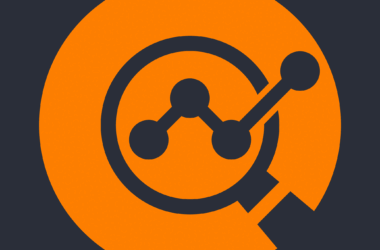Distant work is no longer a model new concept, so why are teams nonetheless combating their distant workforce method?
Consistent with Statista, by Might 2020, the number of distant teams throughout the U.S. alone had elevated to 48.7 million additional employees working from home, excluding these working from residence pre-pandemic.
Distant work has transform the norm given that pandemic, and profitable corporations are transferring fast to undertake the sample whereas implementing the perfect distant workforce method accessible. Nonetheless, distant challenges like productiveness slippage, time theft, employee disengagement, and lack of visibility can sometimes tank distant work settings and depart administration making an attempt to return to a traditional office home.
At Hubstaff, we’ve seen a very distant group develop from scratch whereas we found what works best for our people. From Slack catch-ups to every day Stand-ups, we empowered our people with perception and autonomy whereas holding an open communication channel.
This put up will share design and implement a distant workforce method that drives accountability, effectivity, and long-term scale, and helps you stay away from returning to an office setting.
Improve your group’s effectivity with Hubstaff’s productiveness devices
What’s a distant workforce method — and why most corporations get it improper
Distant workforce method isn’t merely just a few workplace insurance coverage insurance policies nevertheless a strategic framework — a step-by-step methodology that defines each half distant teams have to be worthwhile of their jobs:
- When and the way in which they may perform
- What kind of tech stack you’d current
- Clear protection outlines and pointers that empower distant group members.
Furthermore, transparency spherical employee time monitoring and monitoring devices can revenue your bottom line by boosting group productiveness, job satisfaction, and whole morale.
Widespread misconceptions spherical distant workforce method
- Distant employees are a lot much less motivated and engaged: A few of the frequent misconceptions about distant work is that employees are a lot much less motivated when working from residence. This has been a driving subject behind the present sample of corporations transitioning once more to in-office setups.
Nonetheless, data tells a particular story. Consistent with BambooHR, 42% of employees who returned to the office after working remotely reported feeling like they’re exhibiting up merely for visibility.
The fact: With the right distant work setup (that options productiveness monitoring and strategic workforce optimization know-how devices that help distant work), distant employees will likely be equally, if no extra, productive than their in-office pals. Hubstaff evaluation found that 85% of leaders agree that distant teams are merely as productive when managed correct.
- Employees in distant settings are merely replaceable: One different harmful misunderstanding about distant work is proximity bias or the idea that distant employees are further expendable than these working onsite. Leaders may unconsciously favor in-office group members simply because they see them further sometimes.
A SHRM survey revealed that 67% of remote team supervisors believe remote employees are more replaceable than onsite employees.
The fact: Bodily presence doesn’t equate to value or productiveness. Moreover, distant effectivity will likely be tracked and optimized using reliable productiveness devices. Distant employees transform equally vital contributors when output and outcomes are the primary goal.
- Isolation and burnout: Working from residence is taken into consideration lonely, and an absence of clear boundaries between work and personal life can lead to isolation and potential burnout. A 2022 article throughout the Journal of Organizational Effectiveness confirmed that absenteeism attributed to emphasise and loneliness costs U.S. employers an estimated $154 billion annually.
The fact: This issue will likely be efficiently addressed with the acceptable devices and custom. Hubstaff’s time monitoring and productiveness analytics help distant teams visualize their contribution, serving to extend motivation to do even increased. For instance, course of administration devices like Hubstaff Duties could make clear priorities, encourage important goals, reduce overwork, and improve work-life stability.
- Difficult devices with method: Many organizations undertake time monitoring or communication devices and assume they’ve “gone distant.” Nevertheless devices alone don’t make a method. Implementing digital devices is a sufficient reply for managing a distant workforce.
The fact: Devices are enablers, not strategies themselves. And never utilizing a well-defined distant work protection, clear expectations, effectivity metrics, and highly effective administration, even the perfect devices will fall flat.
A distant workforce method needs to be intentional, combining devices with distant workflows that prioritize perception, accountability, transparency, and group alignment. Further, platforms like Hubstaff can empower such a method, nevertheless the strategic implementation ultimately drives success.
Key components of an environment friendly distant workforce method
The proper distant workforce method comes from understanding your distant teams’ desires. It’s a lot much less about setting a work-from-home schedule for employees and further about fostering clear communication, collaboration, and a safe work environment by way of transparency.
Listed beneath are some actionable distant work best practices for administration:
1. Perception and autonomy
The first setting up block of a high-performing distant workforce is a workplace that promotes perception and autonomy. Perception in a distant group works a lot identical to the placebo effect in remedy. When victims take into account a treatment will work (even once they have been merely given sugar capsules), their thoughts responds to it as if it have been precise.
Equally, when leaders take into account of their group’s means to hold out and take responsibility with out mounted oversight, it boosts autonomy, accountability, and motivation.
Our group at Hubstaff at all times delivers, taking full accountability for his or her assigned duties with out micromanagement. Moreover, leaders work with their teams to resolve the issue if one factor isn’t working. Further, Jira time monitoring integration helps managers assign duties, observe hours spent on Jira factors, and collaborate on course of updates.
2. Clear async communication protocol
Most likely the best distant work practices when managing globally distributed teams is sustaining clear and open communication. Think about implementing asynchronous communication devices in your distant employees. This may embrace sharing paperwork amongst group members in order so as to add enter on a topic with out breaking the timezone barrier or attending a reputation at midnight.
Implement seamless group collaboration by way of enterprise administration and communication devices like Asana, Trello, Slack, Microsoft Teams, and Google Docs. At Hubstaff, our globally dispersed group stays at all times associated by way of Slack immediate messaging and sends out every day Stand-ups by way of Hubstaff Duties (our native course of and enterprise administration software program).
3. Give consideration to finish consequence, not enter
Set environment friendly productiveness metrics, KPIs, or SMART goals to analysis employee productiveness. Define success in your distant group based on outcomes, not enter. A clear visibility into your distant group’s workday will help you to enhance whole effectivity backed by data.
With Hubstaff Insights, you can view and look at train benchmarks and description productive and unproductive apps and URLs. Use it further to classify work time based on the core (focused, productive duties) and non-core (ad-hoc duties, or excessive conferences) to drill down productiveness into granular ranges.
4. Time monitoring and work visibility
Have your distant group observe time spent on each course of to increased gauge the widespread time to completion. This may help you to allocate sources further successfully and cease burnout. In consequence, you’ll purchase peace of ideas by monitoring enterprise progress with out at all times checking in alongside together with your teams.
Time and Train report offers insights into your group’s time spent on duties and duties, train ranges, full billable hours, and idle time alerts, and loads further.
5. Security and compliance
Security and compliance are two important parts in a distant workforce method. Whereas distant work presents a wider experience pool, 24/7 purchaser help and availability, and a slew of various benefits, it does make security and compliance harder. The appropriate distant method is crucial for stopping potential cyberattacks and data breaches.
Cyber threats can emerge when unsecured personal devices are used on public Wi-Fi networks and never utilizing an accurate VPN, significantly and never utilizing a powerful, cloud-based infrastructure for managing data all through numerous locations.
Consistent with an IBM report, organizations with a distant workforce expert an increase throughout the widespread full data breach worth, rising by virtually $137,000 from the baseline of $3.86 million to roughly $4 million.
Distant doesn’t should suggest weak. With the acceptable devices and protocols, your workforce worldwide can hold productive and guarded. With SOC 2 Kind II, HIPAA, and GDPR-compliant insurance coverage insurance policies, infrastructure, and protected time monitoring, Hubstaff manages your data responsibly with out sacrificing flexibility or productiveness. With role-based entry, two-factor authentication, and detailed train logs, you can see how and the place work happens.
Distant workforce method occasion: How SupportNinja scaled onboarding and retaining high-performing distant employees
A distant workforce method occasion may presumably be SupportNinja, a worldwide outsourcing confederate for purchaser help and back-office choices, which used Hubstaff time monitoring and productiveness monitoring devices to scale with ease. Their quick improvement led them to a typical drawback: scaling a distributed workforce with out sacrificing productiveness, accountability, or custom.
The issue: Scaling fast with out shedding readability and alignment
As SupportNinja grew to a gaggle of 500+ distant employees worldwide, the administration group shortly realized that scaling headcount was solely half the battle — the precise obstacle was sustaining readability, custom, and productiveness at scale.
“Many situations, there are employees who’re showing out of the distinctive ideology that the company has tried to create.”
—Cody McLain, Founding father of SupportNinja
This disconnect sometimes occurred all through onboarding, leading to confusion, miscommunication, and inefficiencies that slowed momentum.
Typical challenges of hiring and managing worldwide teams:
- Onboarding new distant hires continuously
- Appropriate work hours monitoring
- Monitoring productiveness with out micromanagement
- Paying globally distributed freelancers and employees with ease
Burnout and missed expectations turned precise points. The administration wished a scalable method to regain administration with out micromanaging.
To proceed scaling effectively, they wished a greater, streamlined distant workforce method that may current progressive strategies to onboard new hires, observe work hours, and pay freelancers as the company grew.
The tactic: setting up a high-performing distant group
Sooner than Hubstaff, SupportNinja turned to totally different time monitoring devices like Time Doctor, ActivTrak, and Desktime for workflow and productiveness administration, nevertheless Hubstaff modified the story.
Proper right here’s how they structured a distant workforce method grounded in readability:
A larger onboarding experience for distant employees
With simple time monitoring and productiveness monitoring for outsourced group members, it was easy to know how group members are adopting new devices and effectivity by means of the onboarding course of.
Automated payroll helped them play worldwide freelancers/contractors all through different charge devices like PayPal, Smart, and Gusto concurrently — with out ever leaving Hubstaff.
Productiveness monitoring whereas onboarding
Administration began measuring productiveness based on outcomes, not enter. All through these first few weeks, productiveness monitoring by way of seeing apps and URLs used, train ranges, and elective screenshots taken at a set interval helped SupportNinja decide roadblocks and probably the most environment friendly members of its outsourced group.
With Hubstaff, they may monitor hours labored, observe task-specific time, and use Insights to optimize workflows — with out micromanaging or disrupting autonomy.
Closing consequence: Scaling enterprise with confidence
- Improved workforce administration with clear visibility into time and productiveness.
- Less complicated effectivity measurement, serving to teams hold aligned and accountable.
- Streamlined worldwide payroll, lowering information effort and errors.
- Elevated whole productiveness all through distant teams.
- Further time for administration to provide consideration to strategic, high-impact duties.
As distant teams develop worldwide and outsourcing turns into the norm, demand for environment friendly distant work collaboration devices retains rising. Whether or not or not to boost asynchronous communication, improve productiveness measurement, or protect security, you need the acceptable distant toolset to run a worthwhile group.
- Communication. Communication devices akin to Slack, Loom, Notion, and further enable async communication, updates, video calls, and clearer workflows.
- Visibility. Time-tracking devices like Hubstaff helps with productiveness benchmarking for calculating output in direction of enter ratio and measure data-driven effectivity with out micromanagement.
- Engagement. Accumulate strategies and observe group sentiment using devices like Qualtrics, which is constructed for high-performing teams.
- Documentation. Creates a single provide of actuality, collaborating in a gaggle workspace constructed on platforms like Confluence to collaborate and share data.
Strategies to think about and alter your distant group method over time
Distant workforce method isn’t static. Leaders who evolve and implement new strategies are those that uncover themselves ahead. Technologically advanced workplaces are moving faster than sooner than, and the leaders who fail to keep up up will fall. Everytime you make data-driven choices, optimize workflows, and implement effectivity, distant teams scale effectively.
Listed beneath are some actionable steps to optimize and improve distant group administration strategies:
Step 1
Consider the data
Everytime you’re evaluating distant workforce effectivity, look previous the raw data to know context. Use devices like Hubstaff’s sample dashboards and weekly productiveness summaries to find out frequent patterns, akin to spikes in idle time, dips in train, or low engagement specifically teams or roles.
Skilled tip: Pair this with attrition, attendance, and workload distribution data to uncover the “why” behind the numbers. For instance, devices like Hubstaff could help spot a correlation between train dips and an absence of PTO utilization.
Step 2
Get group enter
Use retrospectives or 1:1s to gather qualitative strategies, nevertheless you should definitely look previous it and make regular strategies part of your group’s custom, too. Making a day-to-day methodology to expert enchancment helps us all increased embrace distant work. Everytime you create a convention devoted to regular finding out, you’ll see distant employees buy in and take into consideration distant work preparations as stepping stones to broader career goals. Use pulse surveys, anonymous sorts, and async check-ins to gather reliable enter. Assure your group feels safe sharing their successes and struggles with out fear of judgment or consequence.
Ask questions like:
- What’s going successfully for you in your current workflow?
- What’s slowing your work down correct now?
- Are your current devices serving to or creating friction?
- What would help you to essentially really feel further focused or supported?
Step 3
Modify method
Seek for patterns, burnout indicators, time mismatches, and low output and realign workflows, goals, or devices accordingly. Everytime you make modifications, share the insights that led to them. Make clear what the group shared, what the data confirmed, and the way in which that fashioned your decision. Then, refine distant work strategies. The “set-and-forget” methodology will make further provide the outcomes you need in the long run.
Listed beneath are some examples of minor nevertheless high-impact adjustments for creating worthwhile distant work strategies:
- Shifting meeting schedules to align with peak focus hours
- Altering underused devices with further intuitive ones
Skilled tip: Modify workloads based on productiveness insights to cease silent burnout.
With the acceptable distant workforce method, teams don’t merely work—they thrive
Distant group success isn’t practically implementing a complicated tech stack nevertheless setting up a method that drives readability, accountability, and perception. Extreme-performing teams ship outcomes and speak asynchronously, whereas leaders purchase visibility with productiveness measurement devices to streamline operations and scale confidently. A worthwhile distant workforce method helps employee morale and enterprise improvement, not vice versa.
Source link








